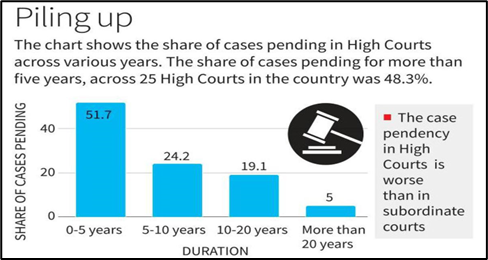ForumIAS announcing GS Foundation Program for UPSC CSE 2025-26 from 27th May. Click Here for more information.
Source: The post is based on the article “India Justice Report 2022 | Judge vacancies remain endemic” published in The Hindu on 5th April 2023
What is the News?
The third India Justice Report, 2022 has been released.
What is the India Justice Report?
India Justice Report is an initiative undertaken by Tata Trusts in 2019 in partnership with the Centre for Social Justice, Common Cause, Commonwealth Human Rights Initiative, DAKSH, TISS–Prayas, Vidhi Centre for Legal Policy and How India Lives.
The report compiles and categorizes data of states and UTs, based on “four pillars” of justice delivery: the police, judiciary, prisons and legal aid.
What are the key findings of the India Justice Report 2022?

Vacancies in courts: As of December 2022, against a sanctioned strength of 1,108 judges, the High Courts were functioning with only 778 judges.
– The subordinate courts were found functioning with 19,288 judges against a sanctioned strength of 24,631 judges.
Rising Pendency in Cases: The number of cases pending per judge is rising in most States over the last five years.
– At High Court(HC) level, UP has the highest average pendency, where cases remain pending for an average of 11.34 years.
– The lowest average HC pendency is in Tripura [1 year], Sikkim [1.9 years] and Meghalaya [2.1 years].
Increasing caseload: The number of cases a judge has to deal with has steadily increased. Between 2018 and 2022, the caseload per judge increased in 22 States and Union Territories.
Case clearance rate (CCR): It is the number of cases disposed of in a year measured against the number filed in that year is a common metric used to determine the rate at which cases are disposed of. A CCR of more than 100% indicates that the number of pending cases is reducing.
– The HCs are increasingly clearing more cases annually than subordinate courts. Tripura is the only State where the CCR in district courts remained above 100%.
Judicial Infrastructure: Nationally, the number of court halls appears sufficient for the number of actual judges. However, that space will become a problem if all the sanctioned posts are filled.




